Myriapods were among the first animals to set foot (or in this case many, many feet) on land.
Myriapoda (meaning “many legs”) is a Subphylum within the Phylum Arthropoda (meaning “jointed legs”). The Subphylum Myriapoda includes:
Class Diplopoda (Millipedes)
Class Chilopoda (Centipedes)
Class Paurapoda (Paurapods)
Class Symphyla (Symphylans)
Pauropods and Symphylans are tiny, pale animals resembling millipedes or centipedes. They live in soil, leaf litter and decaying wood, feeding on fungi, decaying vegetation and living plants. Both of these groups have representatives in North Carolina but they are seldom seen. This website will include more information about Pauropods and Symphylans in the future.
Millipedes (Diplopoda)
In contrast to the other three classes of Myriapods, millipedes have two pairs of legs on each segment. They are generally slow-moving, moisture-loving animals that feed on decaying vegetation and fungi. Their body shape is generally cylindrical, but they are remarkably variable in size, shape, length, ornamentation and lifestyle. Millipedes are found throughout the world except where it is very cold or very dry. The extant species of millipedes are placed into 16 Orders worldwide, with more than 13,000 described species. Scientists estimate that there are many more species still to be discovered. Ten of these Orders are found in North Carolina. For an identification key to Millipede Orders, see Millipedes Made Easy from the Field Museum of Chicago. | ORDER | IMAGE | IDENTIFICATION | DISTRIBUTION |
|---|
POLYXENIDA
BRISTLE MILLIPEDES |  | Very small (less than 4 mm)
11-13 body segments (also called rings)
Tufts of bristles all over the body, with two large tufts at the posterior end. The bristles are for defense from predators.
| Found worldwide, mostly in warmer areas
In NC, throughout Piedmont and Coastal Plain.
| GLOMERIDA
PILL MILLIPEDES | 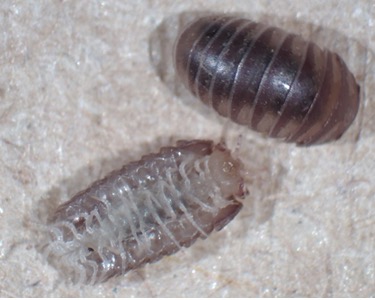 | Very small (about 3 mm) in NC, up to 20 mm in other parts of the world
Adult with 12 body rings
Can roll itself into a tight ball, with the second segment enlarged to cover the legs.
| Northern hemisphere and Southeast Asia
In NC, limited to southern Mountains
| POLYZONIIDA
SLUG MILLIPEDES | 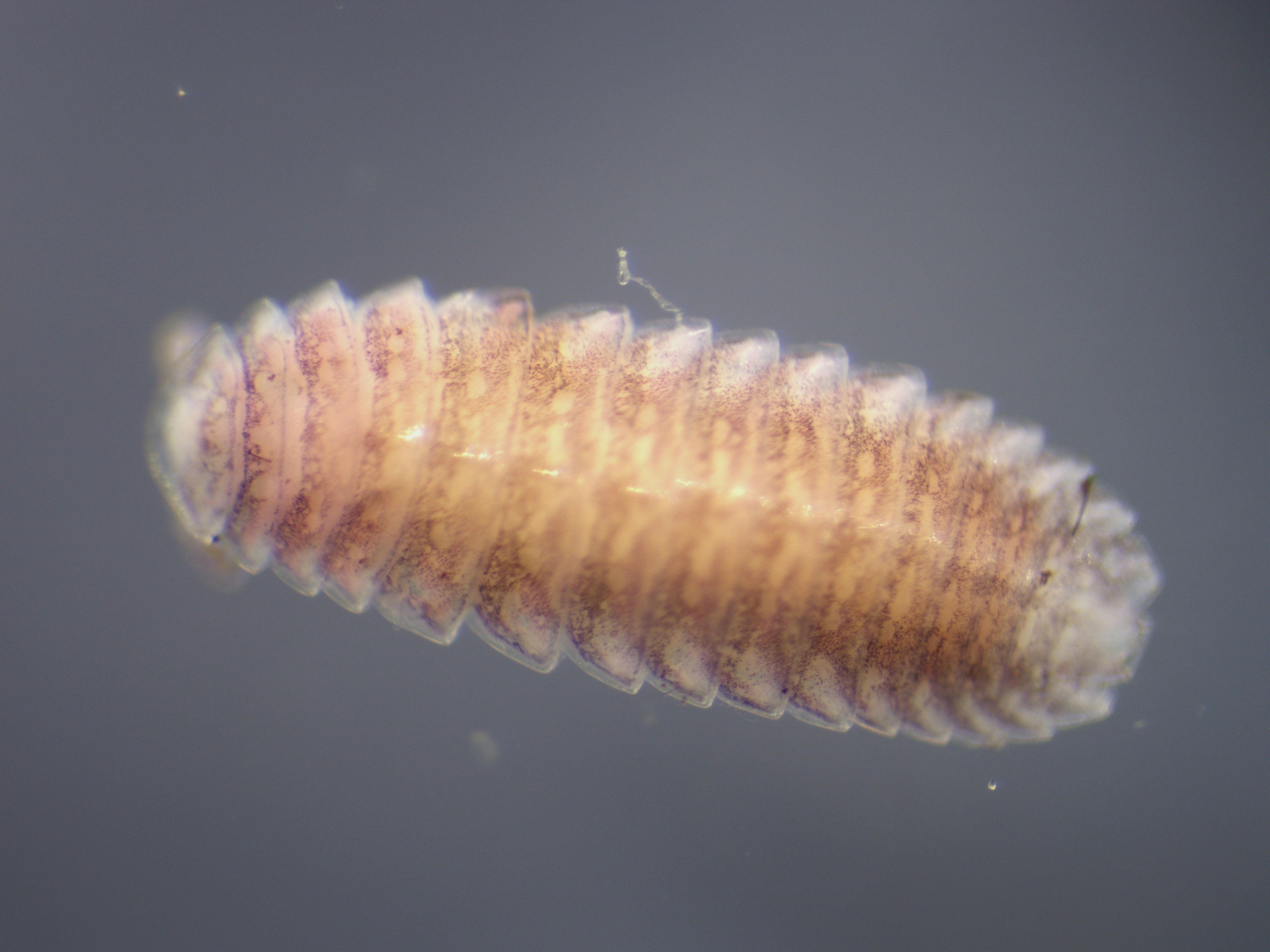  | Small to medium
Adult with more than 22 rings
Body wide, flattened on the underside and rounded on the top. Front of head beak-shaped with two dark eye spots.
| Europe, North America, Caribbean, Southeast Asia
In NC, throughout
| PLATYDESMIDA
FEATHER MILLIPEDES | 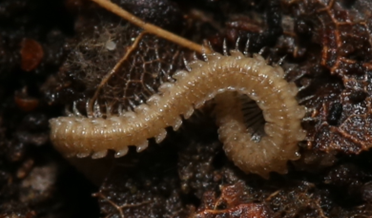 | Medium to long (up to 60 mm)
More than 35 body rings, up to 110.
Eyes absent, paranota (extensions on the sides of the segments) present, head with bulges above the antennae
| North and Central America, Europe, Japan, Southeast Asia
In NC, Piedmont and Mountain regions
| JULIDA
SNAKE MILLIPEDES | 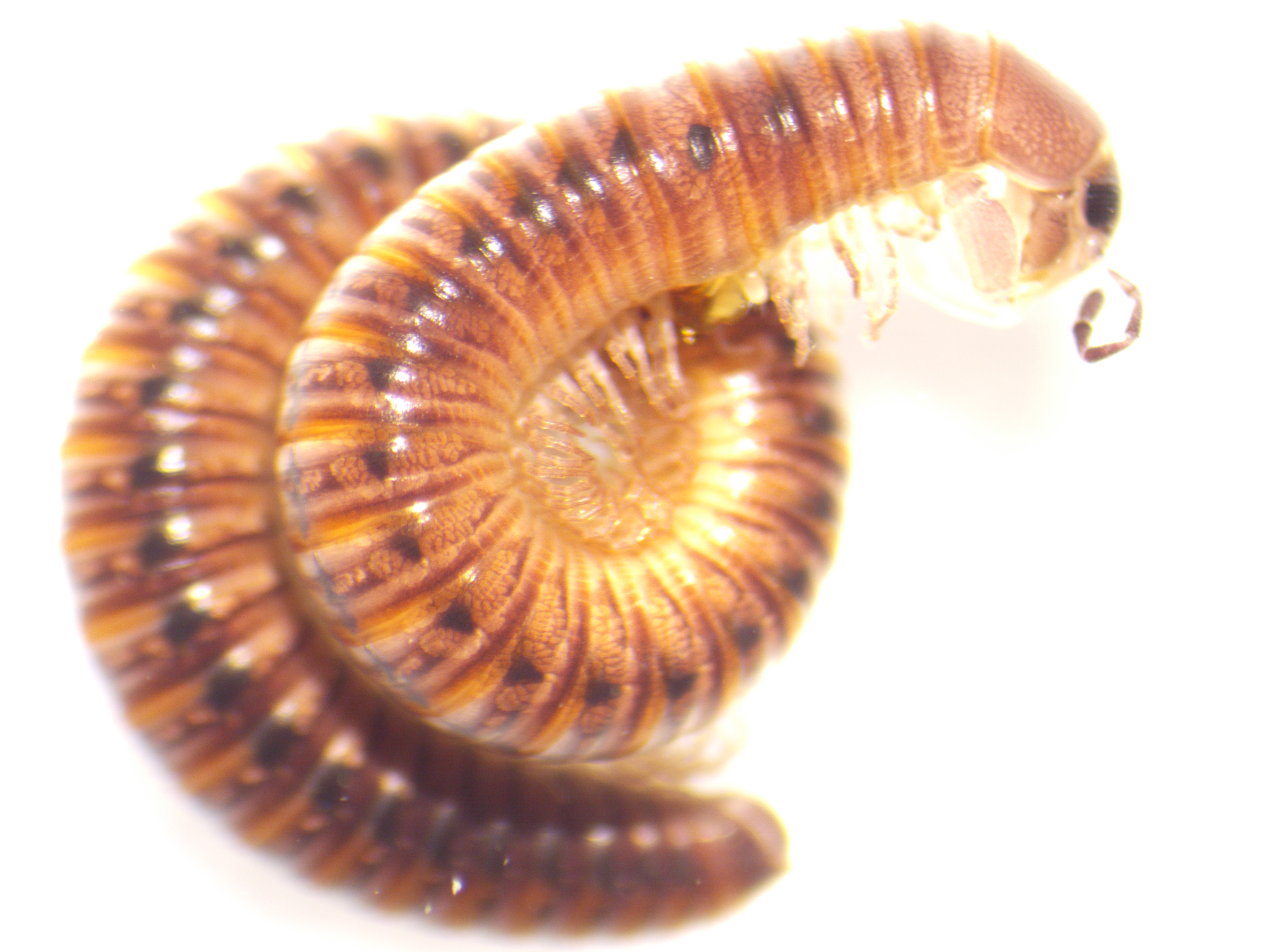 | Small to large (10-120 mm)
More than 32 body rings
Body smooth and cylindrical, first pair of legs in males either short and hook-like or greatly enlarged.
| North America to Panama, Europe, Asia north of the Himalayas, Southeast Asia
In NC, throughout
| SPIROBOLIDA
IRON MILLIPEDES |  | Large and robust (up to 200 mm)
40 to 60 body rings
Body smooth and cylindrical, eyes with many ocelli. The front of the head has a suture line extending upward from the labium (the “lip”).
| Western hemisphere, sub-Saharan Africa, Southeast Asia, Australia
In NC, throughout
| SPIROSTREPTIDA
ORNATE MILLIPEDES | 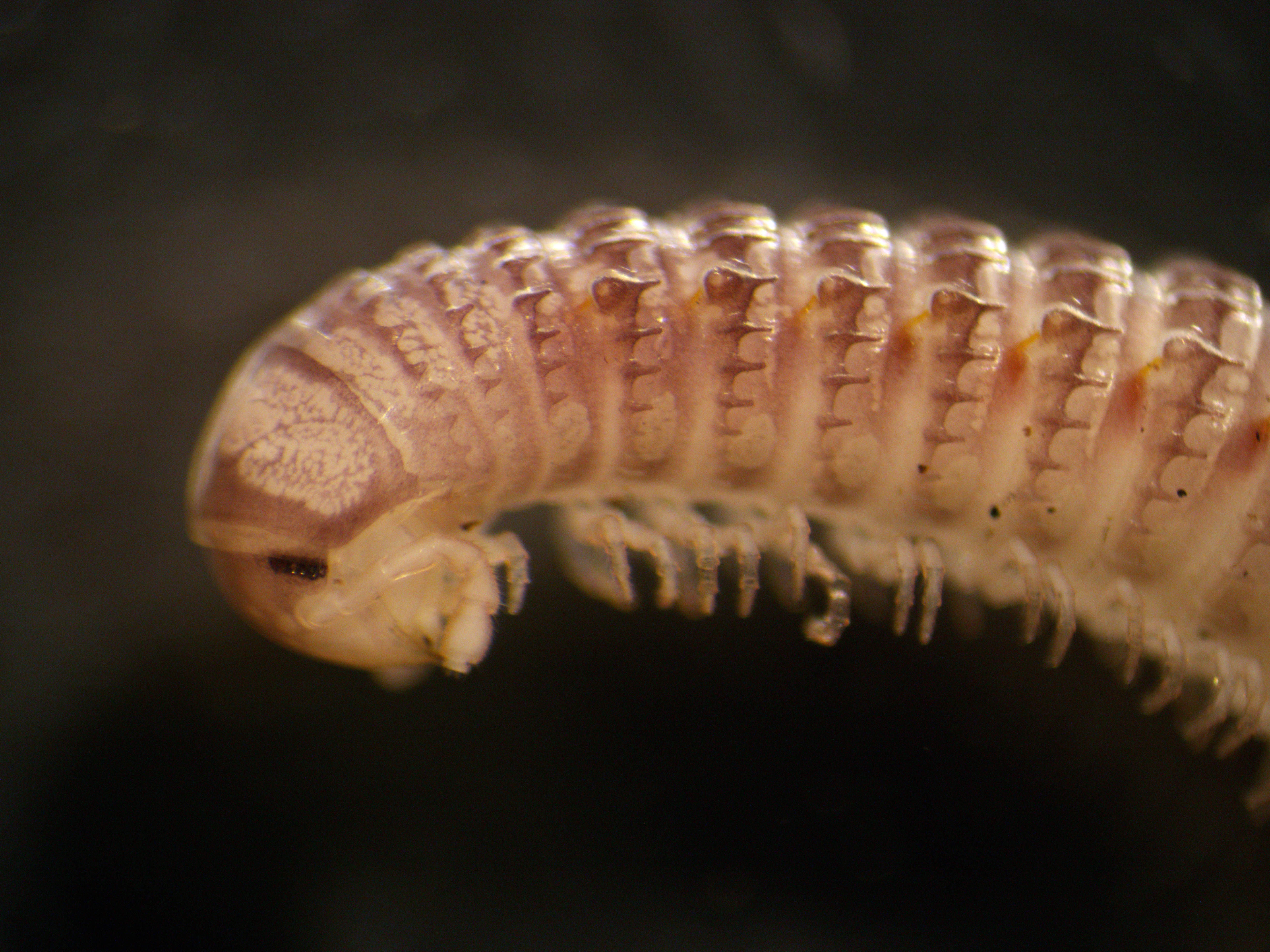 | Small to large (6-300 mm)
More than 32 body rings
Body with crests or ridges, ocelli arranged in a row. The side pieces of the “gnathochilarium” (a mouth part on the underside of the head) are separated.
| Western hemisphere, Australia, Africa, Asia south of the Himalayas
In NC, Piedmont and Mountain regions
| CHORDEUMATIDA
SAUSAGE MILLIPEDES | 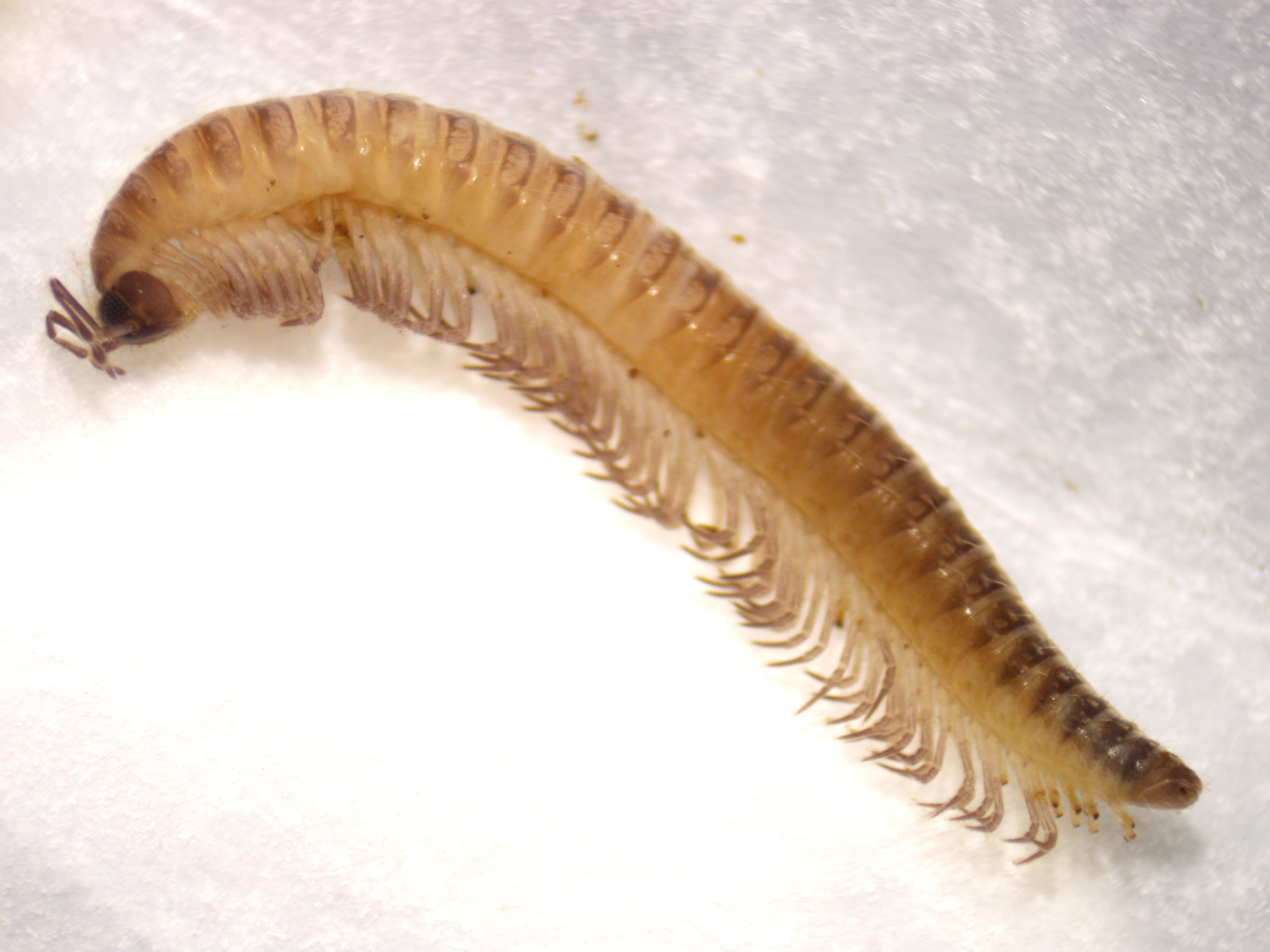 | Small to medium (4-25 mm)
Adult with 26 to 32 rings
A distinct longitudinal groove down the middle of the back and a transverse row of long hairs on the back of each segment.
| Worldwide except for tropical South America and sub-Saharan Africa
In NC, throughout
| CALLIPODIDA
CRESTED MILLIPEDES | 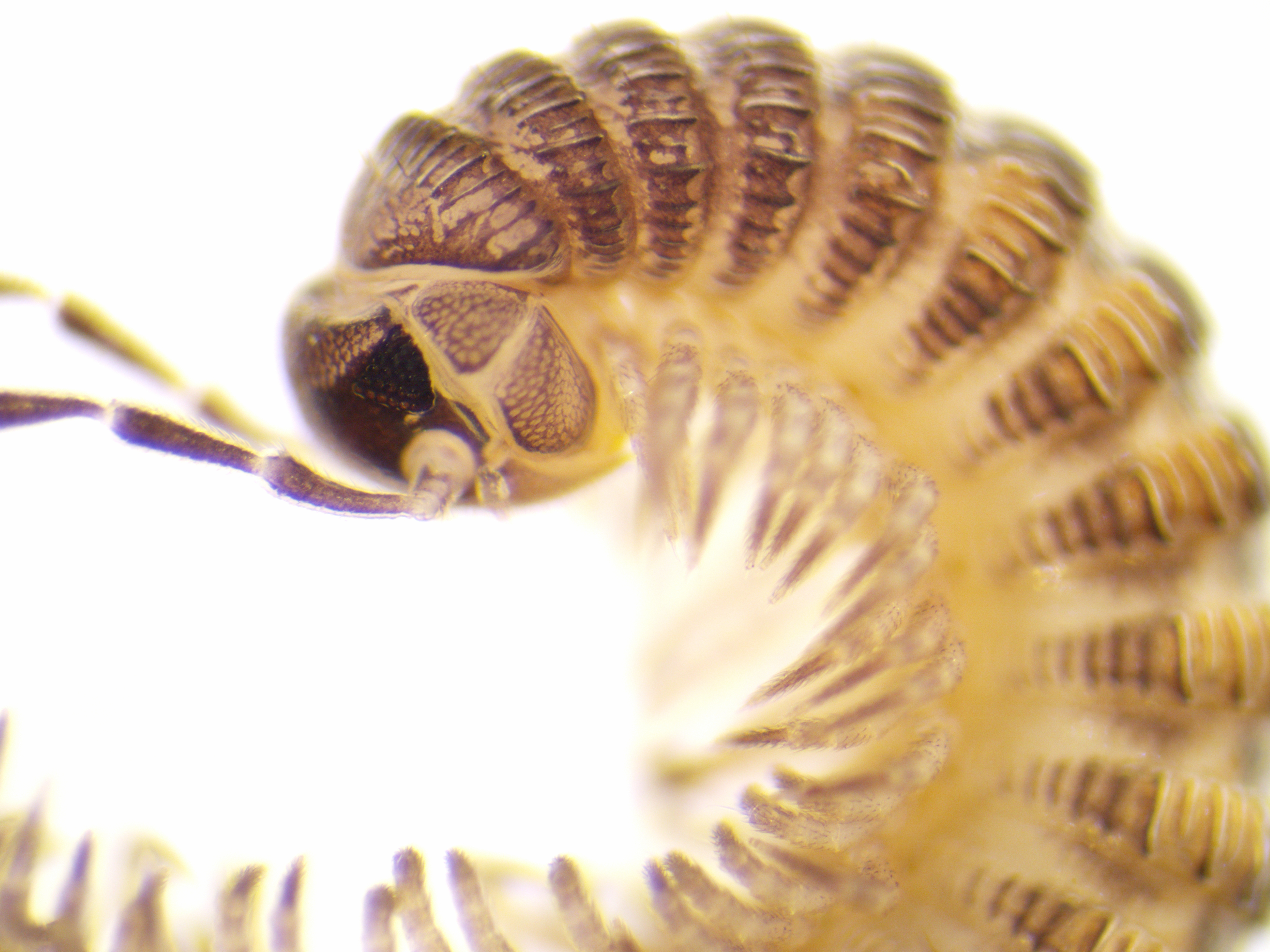 | Medium to large (up to 100 mm)
40-60 body rings
Body with longitudinal crests and ridges giving it a very textured appearance. Triangular eyes with many ocelli.
| North America, Europe and West Asia, southern China and Southeast Asia
In NC, Piedmont and Mountain regions. | POLYDESMIDA
FLAT-BACKED MILLIPEDES |  | Small to large (3-130 mm)
Adult with 19 or 20 rings
No eyes, often with “paranota” or extensions on the sides of the segments, making them appear flat.
| Worldwide
In NC, throughout
|
Centipedes (Chilopoda)
Centipedes have one pair of legs on each segment. They are generally fast running predators with the first pair of legs modified into venomous fangs called “forcipules”. Their body shape is generally flattened and elongated, but they are variable in size, length and number of segments. The five extant Orders of centipedes contain more than 3,000 species worldwide, with many still to be discovered. Four Orders occur in North Carolina. | ORDER | IMAGE | IDENTIFICATION | DISTRIBUTION |
|---|
GEOPHILOMORPHA
SOIL CENTIPEDES | 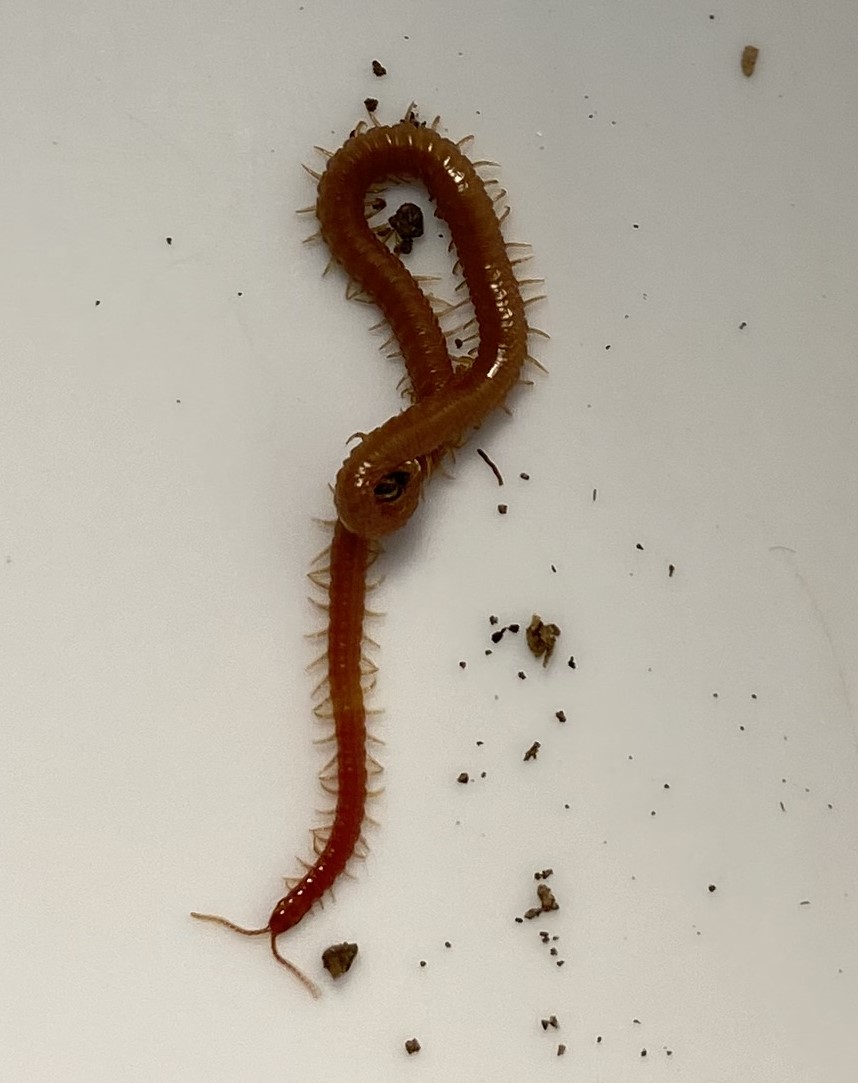 | Small to medium
Adult and young with 27 or more pairs of legs
Long and slender, eyeless, brownish yellow or bright reddish orange in color. They are predators and live in the soil and leaf litter.
| Worldwide, the most widespread and diverse group
In NC, throughout
| LITHOBIOMORPHA
STONE CENTIPEDES |  | Small to medium (4-40 mm)
Adult with 15 pairs of legs, young with fewer
Some of the segments are longer than others. The body can be golden yellow, light brown, or dark brown. They are predators and live in soil, leaf litter and woody debris.
| Worldwide, most diverse in temperate areas
In NC, throughout
| SCOLOPENDROMORPHA
BARK CENTIPEDES |  | Small to very large
Adult and young with 21 or 23 pairs of legs.
Fast and predatory, the larger members of this group can inflict a painful bite. Eyes can be present or absent, body can be yellow, orange, blueish, greenish, black or multicolored
| Worldwide, most diverse in tropical regions
In NC, throughout
| SCUTIGEROMORPHA
HOUSE CENTIPEDES |  | Small to medium
Adult with 15 pairs of legs, young with fewer
Short body with long, feathery legs and antennae. Fast and predatory, with compound eyes.
| Mainly tropical, some temperate species
In NC, often found in houses, it can also occur in natural areas. As a house guest, it kills and eats other arthropods such as roaches, bedbugs, termites, and silverfish.
|
|